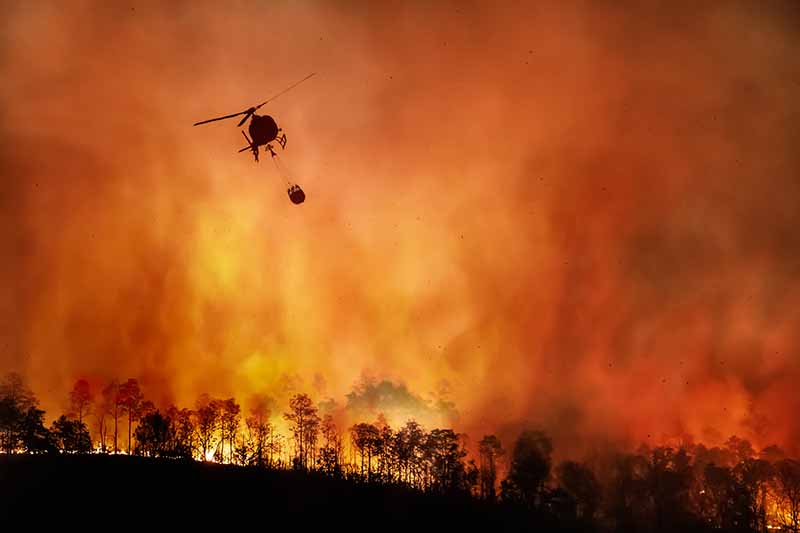Dixie Fire Exemplifies New Trend of Highly Destructive Wildfires

CALIFORNIA—October 22, 2021—California’s largest fire this year began about 100 miles northeast of Lake Tahoe on July 13, possibly due to a tree falling on a powerline. Three months later, the Dixie fire is almost completely contained, but not before burning more than 960,000 acres, according to The New York Times. It is the second-largest fire in state history. Controlling Dixie was a costly, monthslong effort that involved more than 6,500 people and hundreds of planes, helicopters, trucks, and bulldozers. The effort cost more than $610 million.
Wildfires have always been a part of the ecosystem of the West Coast, but their intensity and destructiveness is changing. In the 1990s, about 500,000 acres burned in California in a typical year. For the past decade, the average number of acres burned has be rising sharply, though the number of fires each year remains fairly consistent. The New York Times reports that from 2015 to 2019, the average number of acres burned topped 1 million. Four million acres burned in 2020, and 2.5 million have burned so far in 2021. Of California’s 20 largest fires on record, nine have occurred since 2020.
These staggering numbers are the result of severe drought and record-breaking heat waves (likely linked to climate change), which turns the California landscape into dry tinder that can burst into flame from the slightest spark. High winds and miles of dry fuel yield fires that grow and spread at sometimes breathtaking speed, leaping over firebreaks intended to contain them. The larger fires are also much more costly to control, sometimes burning for months and destroying entire towns and neighborhoods.
The Dixie fire grew so large, it created its own weather, sending smoke and heat so high into the atmosphere that moisture condensed around the smoke, creating a fire-fueled thunderstorm. These storms generate wind and lightning (but very little rain), spreading the fire farther and faster, leading to more firestorms that continue to worsen the fire in a downward spiral. In total, Dixie generated eight separate firestorms and at least one “fire whirl” or tornado of flames, according to The New York Times. Fires large enough to create weather systems are highly unpredictable, spreading in multiple directions and extremely difficult to control.
The New York Times interviewed Kristen Allison, a 25-year veteran firefighter in California who said, “Fifteen years ago, a 100,000-acre fire would be the largest fire of your career. Now, we have one-million-acre fires.” This year alone, seven California fires have burned more than 100,000 acres each.












